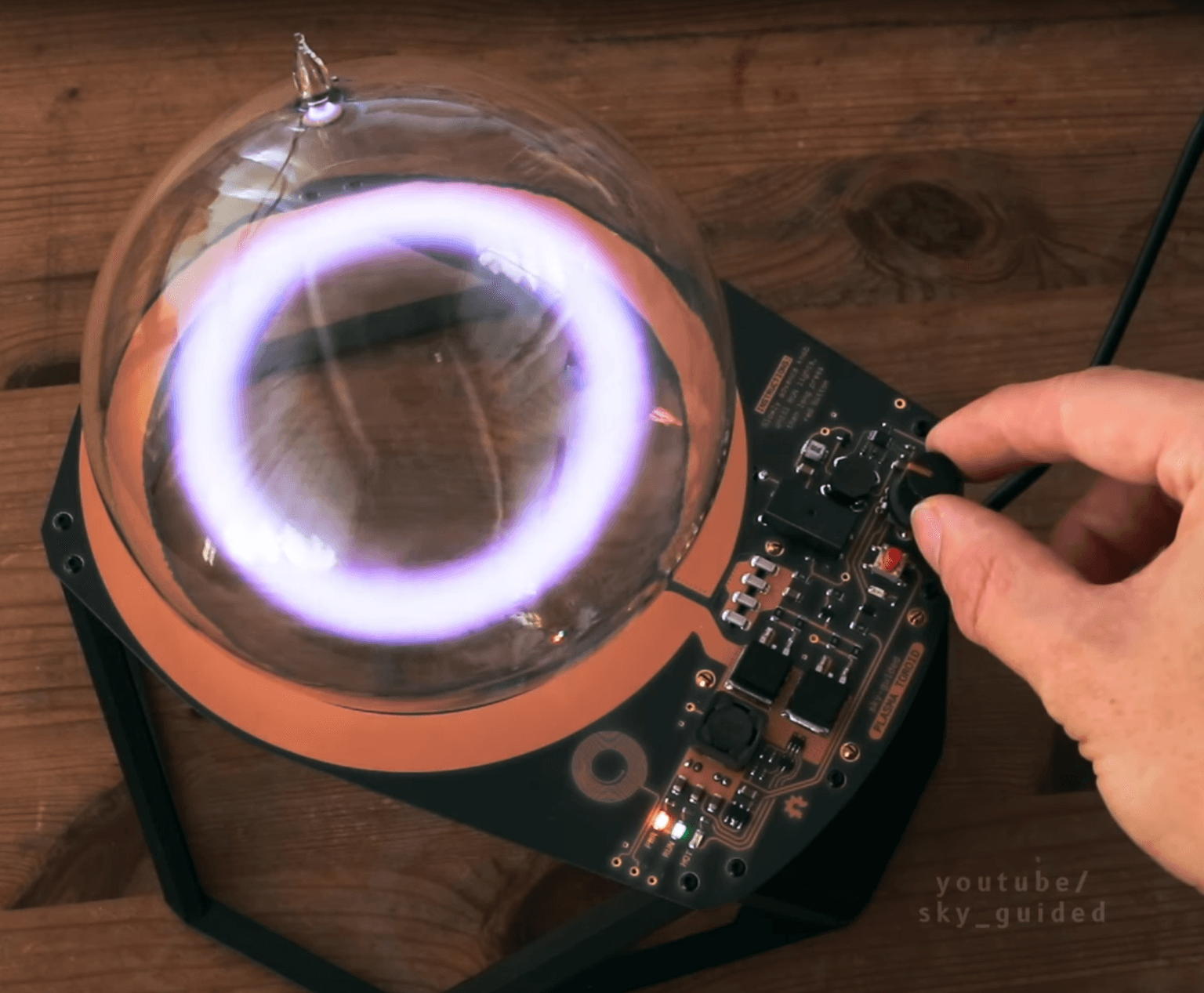Building The Torilux - Part I
Not long ago, I stumbled upon a fascinating project on Hackaday. The project showcased the design and construction of circuitry capable of generating a rotating magnetic field, which in turn shapes ionized gas into plasma forms using electromagnetic fields. I was immediately drawn to it, not only because of the inherent coolness of ionized gas, but also due to the connection to power electronics (my area of expertise) and the potential to create unique, visually striking plasma displays. I decided to develop my own version of the device as an affordable lighting fixture, which I’ve decided to name Torilux. I decided to start this article series as a log and guide for anyone interested in building their own version of this fascinating device.

Original Plasma Toroid Image
Original Plasma Toroid Image | Credit: Hackaday (sky_guided)
The Operating Principle
Let's assume that we have a coil and we have some sort of circuit capable of pushing a sinusoidal current through it - this coil would be a standard air-core inductor, producing an alternating magnetic field in its center. Let's try to play with some numbers to understand the behavior of the system.
Let's say we are pushing a sinusoidal current with an amplitude of through a coil with turns and a radius of . The amplitude of the magnetic field at the center of the coil can be easily estimated to be:
Magnetic Field
Concept | Magnetic Field
The time-varying magnetic field induces an electric field in the surrounding space, which can be calculated using Faraday's law of induction:
Electric Field
Concept | Electric Field
With the circumference of the coil and the amplitude of the magnetic field already determined, the frequency of the current flowing through the coil remains as the main variable we can adjust. As we've just seen, increasing this frequency directly increases the strength of the resulting electric field.
At a pressure of - a typical value for neon display tubes - the electric field required to ionize Neon is about , while for Xenon it is around .
The frequency of the current flowing through the coil is directly related to the switching losses in the circuit components used to generate it. For this reason, it's best to use a frequency that is only as high as necessary to achieve the required electric field strength.
Maintaining an electric field strong enough to ionize atoms is quite challenging. Achieving this would require a larger coil with more turns, which would significantly increase power losses beyond what is practical. After all, the goal is to have a device that can run on a desk without consuming excessive power or generating too much heat.
So what purpose does our electric field serve? It is used not to ionize, but to accelerate the ions that must be produced in the gas some other way.
Producing Ions
In order to produce ions, we need to create a high electric field that can overcome the ionization energy of the gas atoms. This can be achieved by increasing the frequency of the current flowing through the coil, which in turn increases the strength of the resulting electric field.